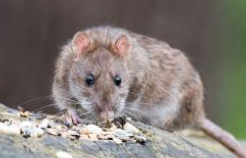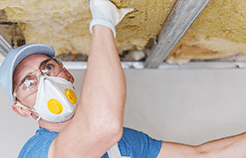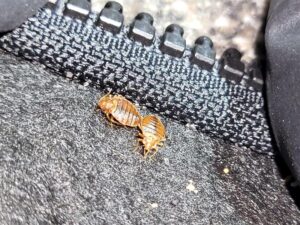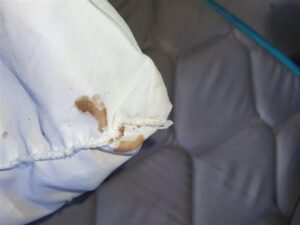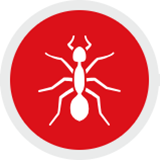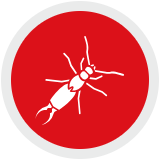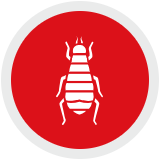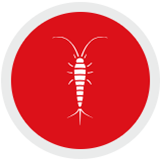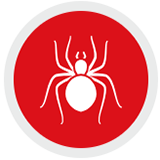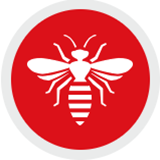You likely have bed bugs if you’re waking up with itchy bites or tiny dark stains on your sheets. In Seattle, the culprit is almost always the common bed bug, a small, reddish-brown insect that hides in mattresses, furniture gaps, and other cozy spots in your home.
According to a Cleveland Clinic article, nearly one in five Americans has dealt with a bed bug infection or knows someone who has, either in their house or while staying in a hotel.
These pests are sneaky, reproduce quickly, and can turn a minor problem into a full-blown infestation almost overnight. Many people don’t realize they are in their home until they’ve been there for a while, which is why early identification is crucial.
In this guide, we cover the seven signs of bed bugs you shouldn’t ignore, along with tips on early bed bug detection and what to do if you spot an infestation. Keep reading to learn more.
1. Red, Itchy Bites on Your Skin
One of the most common signs of bed bugs is red, itchy bites. They feed on blood and often bite multiple times in a row, leaving small welts in clusters or lines on exposed skin, such as the arms, legs, neck, and face.
Not everyone reacts the same way; some may experience swelling and itching, while others might not show visible signs. Paying attention to unexplained bites, especially those that appear after sleeping, is an essential step in identifying a potential bed bug problem.
2. Fecal Spots on Bedding or Furniture
Another clear indicator is the presence of small, dark, or rust-colored spots. These are droppings from bed bugs that contain digested blood. You may find them on sheets, pillowcases, mattresses, and even along furniture cracks.
Unlike normal stains, these spots often appear in clusters and don’t wash away easily. Recognizing bed bug droppings can help with early detection, allowing you to act before the infestation spreads further.
3. Shed Skins and Exoskeletons
Bed bugs go through several growth stages, shedding their skins as they mature. Shed skins can often be found in less obvious spots, like:
- Inside drawers
- Under nightstands
- Near baseboards
Finding these indicates reproduction, meaning the infestation is ongoing.
4. Live Bed Bugs in Hiding Places
Spotting a live bed bug is a definitive red flag. Bed bugs are small, which allows them to hide in very tight spaces. Common bed bug hideouts include:
- Mattress or pillowcase seams
- Box springs
- Headboards
- Electrical outlets
They are most active at night, so regularly checking these areas with a flashlight and magnifying glass can save time and stress later.
5. Tiny White Eggs or Eggshells
The eggs are tiny, pinhead-sized, and usually have a whitish or translucent appearance. Eggs indicate active breeding, meaning a small infestation can quickly grow into a larger one. Spotting eggs may be more challenging than spotting bugs or droppings but knowing what to look for is vital.
Early recognition allows you to take immediate action, such as laundering bedding in hot water, vacuuming hiding spots, or contacting a pest control professional to control the infestation.
6. Musty, Sweet Odor
A heavy infestation can produce a distinctive, musty, sweet odor. This scent comes from the bugs’ scent glands and becomes noticeable in areas where bed bugs gather in large numbers. Although odor alone isn’t definitive, noticing it along with bites, droppings, or shed skins serves as clear bed bug infestation indicators.
Noticing unusual smells in bedrooms or guest rooms can help detect bed bugs before other visible signs appear.
7. Blood Stains or Smears on Sheets
Small reddish smears on sheets, pillowcases, or mattresses can result from accidentally crushing bed bugs during feeding. Unlike droppings, these stains are irregular, scattered, and don’t follow a pattern.
Regularly inspecting your bedding can make a big difference in controlling the problem and preventing the infestation from spreading to other parts of your home.
Frequently Asked Questions
Q: Do bed bugs transmit diseases?
Bed bugs are not known to transmit diseases, but their bites can cause discomfort, itching, and sometimes secondary infections from scratching.
Q: Can I get rid of bed bugs myself?
DIY methods may help with small infestations, but professional pest control is usually necessary for complete eradication.
Q: How can I prevent bed bugs?
Inspect luggage after travel, regularly check bedding, reduce clutter to limit any hiding spots, and examine secondhand furniture before bringing it home.
Q: How fast can bed bugs spread?
Bed bugs reproduce quickly. Females can lay 1-3 eggs each day, potentially over 200 eggs in their lifetime.
Q: Do bed bugs live in hair?
No, bed bugs do not live in human hair. They prefer to hide in cracks and crevices in or near sleeping areas.
Q: How long do bed bugs live?
Under normal conditions, adult bed bugs can live 6-12 months. They can survive for several months without feeding, which makes infestations difficult to control if not identified quickly.
Q: Can bed bugs fly or jump?
No, bed bugs cannot fly or jump. They crawl and spread by hitching rides on clothing, luggage, or furniture.
Q: What attracts bed bugs?
They are attracted to carbon dioxide, body heat, and certain chemicals found in sweat. They are not drawn to dirt or poor hygiene.
Q: Can bed bugs be eliminated with heat?
Yes, bed bugs and their eggs can be killed by sustained heat. Washing and drying infested fabrics on high heat or using steam treatments can be effective.
Recognizing the Signs of Bed Bugs
Identifying the early signs of bed bugs is the best way to protect your home and family. Being vigilant and taking action at the first hint of an infestation allows for quicker, more effective treatment and prevents the problem from spreading.
For over 50 years, Eastside Exterminators has combined family values, Seattle-area expertise, and hands-on experience to keep homes pest-free. Our long-tenured, certified technicians use cutting-edge SMART technology to detect and prevent infestations, and we also offer full-service insulation solutions to safeguard your home inside and out. Contact us today and put our knowledge and innovative approach to work.

 (425) 318-7912
(425) 318-7912
 MY ACCOUNT
MY ACCOUNT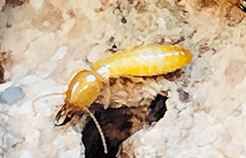
 425-318-7912
425-318-7912